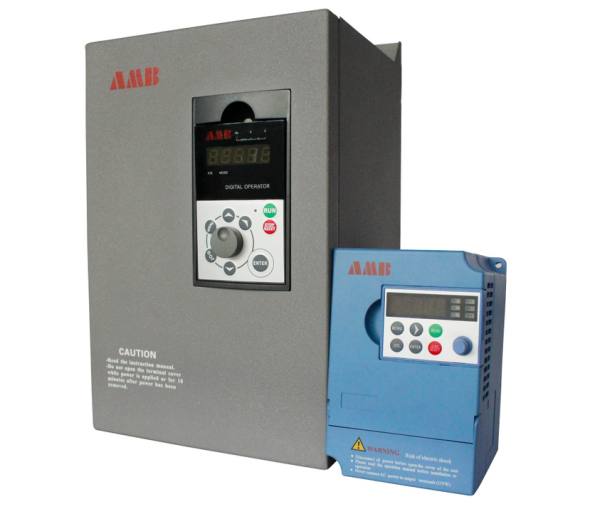
In the actual speed regulation process, a common AC power source with adjustable frequency can not meet the requirements for the speed control of the asynchronous motor. It must also consider the effective use of the motor magnetic field, suppress the starting current and obtain the ideal torque characteristics, such as Low-frequency torque characteristics and other issues.
In order to obtain a more ideal frequency conversion speed regulation effect, V / f control mode, slip frequency control mode, vector control mode and direct torque control mode are adopted in the development process of frequency conversion control technology.
1. V / f control of frequency conversion control
The V / f control mode refers to the control mode in which the ratio of voltage and frequency is kept constant in order to keep the main magnetic flux constant and ensure the output of the motor during the frequency conversion speed regulation, that is, the V / f = constant control mode. For a 380V, 50Hz motor, when the operating frequency is 40Hz, the V / f should be kept constant, then the power supply voltage of the motor at 40Hz is 380 × (40/50) = 304V.
This kind of frequency converter has high cost performance, and is widely used in various occasions with the purpose of energy saving and low requirements on speed accuracy. It is the basic control method of the frequency converter. However, satisfactory control performance cannot be given in terms of speed control, and when the output frequency is low, the output voltage drops, the stator winding current decreases, and the motor torque is insufficient. The output voltage needs to be appropriately increased to increase the motor torque To perform torque compensation.
2. Slip frequency control of frequency conversion control
This is a closed-loop control method for speed feedback control. Its dynamic and static performance are superior to the V / f control method. Therefore, it can be applied to various speed control systems that have high requirements for speed and accuracy. However, because the frequency converter using this control method is inferior to the vector control frequency converter in terms of control performance, and the complexity of the two hardware circuits is equivalent, so the frequency converter using the slip frequency control method has been basically controlled by the vector Taken by the inverter.
3. Vector control of frequency conversion control
Vector control, also known as magnetic field-oriented control. It was first proposed by F. Blasschke et al. In the early 1970s and explained this principle by comparing DC motors with AC motors.
This method imitates the control method of a DC motor, and uses vector coordinate transformation to divide the stator current of the asynchronous motor into a current component that generates a magnetic field (excitation current) and a vertical current component that generates torque (torque current), while controlling the asynchronous motor. The amplitude and phase of the stator current, which controls the stator current vector, is called the vector control mode. The control method
The magnetic flux of the motor is kept constant, thereby achieving good torque control performance and high-performance control.
The emergence of the vector control method makes the asynchronous motor frequency conversion speed control in an all-round dominant position in the field of motor speed control. It has many advantages, it can be controlled from zero speed, the speed range is wide, the torque can be accurately controlled, the system responds quickly, and the acceleration / deceleration performance is good. Therefore, this control method is widely used in speed control systems that require high speed control performance. However, the vector control technology needs to estimate the motor parameters correctly, and how to improve the accuracy of the parameters has been a topic of constant research.
4. Direct torque control of frequency conversion control
Direct torque control technology is an analysis method that uses space vectors and stator magnetic field orientation, directly analyzes the mathematical model of the asynchronous motor in the stator coordinate system, calculates and controls the flux linkage and torque of the asynchronous motor, and uses discrete two-point adjustment (Band-Band control) compares the torque detection value with the torque reference value to limit the torque fluctuation within a certain tolerance range, the size of the tolerance is controlled by the frequency regulator and generates PWM pulses The wide modulation signal directly controls the switching state of the inverter to obtain a high dynamic performance torque output. Its control effect does not depend on whether the mathematical model of the asynchronous motor can be simplified, but on the actual condition of torque. It does not require comparison, equivalence, conversion between AC motor and DC motor, that is, it does not need to imitate the control of DC motor. Because it saves the coordinate transformation and calculation of vector transformation and simplifies the mathematical model of asynchronous motors for decoupling, there is no usual PWM pulse width modulation signal generator, so its control structure is simple, the physical concept of control signal processing is clear The torque response of the system is rapid and there is no overshoot. It is an AC speed regulation method with high static and dynamic performance. Compared with the vector control method, the direct torque control field orientation uses a custom flux linkage, which uses discrete voltage states and the concept of hexagonal flux linkage trajectories or approximately circular flux linkage trajectories. As long as you know the nail resistance, you can observe it. The vector control field orientation uses the rotor flux linkage. Observing the rotor flux linkage requires knowing the motor rotor resistance and inductance. Therefore, direct torque control greatly reduces the problem that the control performance in vector control technology is susceptible to parameter changes.

|
|

|
| The public, | Mobile station |
 0755-81719517
0755-81719517
|
|
 0755-81719530 0755-81719530 |
 amb@ambition.com.cn amb@ambition.com.cn |
 Floor 1, 5 and 6, building 7, lijincheng science and technology industrial park, gongye dong road, longhua new district, shenzhen Floor 1, 5 and 6, building 7, lijincheng science and technology industrial park, gongye dong road, longhua new district, shenzhen |
|